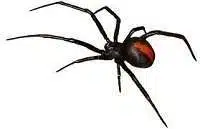
Spiders
Read the passage given below carefully:
To most of us, the most fascinating thing about spiders is the webs they spin. But actually a spider the most amazing creature in many other respects. First of all, spiders are not insects. They belong to a group known as ‘arachnids’ and differ from insects in that they have eight legs, usually eight eyes, and only two parts to their bodies.
They can live on any type of climate and are found in every part of the world. They can live on the water, on the ground, depending on their species. They vary in size from 8 centimetres to that are so small that they are barely visible. Some spiders can go a whole year without water. One of spider, the large tarantula, eats birds and can live for as long as 15 years. Yet most spiders live just one year.
The silk in a spider’s web is manufactured in certain abdominal glands. The silk is forced through m tiny holes from the spinning organs at the tip of the abdomen. It comes out as a liquid which becomes solid on contact with the air.
There are many kinds of silk that a spider can spin. The sticky silk which the spider uses in its web catch its prey is the sticky one. The strong supporting spokes which are non-sticky and the silks in a cocoon in which the eggs are laid are actually soft and fluffy. Other silks that it weaves are hard even fibrous.
Even the shapes of spiders’ webs differ. Some make webs that are shaped like wheels and are commonly used for catching its prey. It is made by first forming a rectangle with heavy outer lines which form the foundation lines of the web. The spokes of the wheel are constructed next. Then comes a scaffolding of three to four spiels. The close, sticky silk spiral is built last.
Other webs that a spider spins are ‘sheet webs’. They are flat and are funnel-shaped. Sometimes, they are even dome-shaped masses of silk. The spider uses one side of the web to live in it. ‘Trap’ door spiders make a burrow with a lid at the top. It is disguised by sticks and dirt. A ‘Wolf’ spider builds a tunnel into the ground and lines the area with silk.
The European water spider builds a home in the shape of a bell. This is done entirely underwater! The spider then fills it with air brought from the surface in the hairs of its abdomen. Then she lays eggs and rears the young in this enclosure until they are old enough to build webs for themselves. Yet not all spiders build nests for themselves. Some of them just make a ‘home’ in a leaf, or a slice of tree bark instead.
(iii) can survive in any climate
(iv) live on air, water, ground as per species
(v) size variations: 8 cm minuscule
(vi) tarantula preys on birds and lives 15 yrs –
(vii) can survive without water
II. Silk in a spider’s web
(i)and in abdominal glands
(ii) spinning organs at the tip of abdominal glands
(iii) emits as liquid and solidifies on contact with air
III. ‘Pipes of silk made
(i)sticky silk to catch prey
(ii)speaking spokes: non-sticky
(iii) the scaffolding of 3-4 spiels
(iv) sticky silk spiral, built last
IV. Varieties of spider webs
(i) sheet webs
A. flat and funnel-shaped
B. also tunnel-shaped
IV. Reasons for India’s growth
(i)quality care and attention is given
(ii) more individual-oriented
(iii) staff trained to be culture-sensitive
(iv) the overall holistic approach
V. growth in non-metro cities
(i) same level of medi quality
(ii) drawback: connectivity to metro poor
(iii) challenge: to maintain the present status
| Key to Abbreviations
|
| co. company medi medical info information accom’n accommodation metro metropolitan |
(b) Summary
Rising costs have driven medical tourism growth in India, from $3 million to an expected $8 by 2020 as medical trips turn vacation-like. A Pune-based company has a 1500 partnership data hospitals and Turkish patients. Online information and package treatment information on no payment is available. The concierge services include visa facilitation, hotel accommodation and post-operative care. Others offer staff trained to be culture-sensitive. Growth has fanned to non-metro cities because of pricing advantages but is hampered by poor connectivity and challenge to keep up standards.
Download the above Passage in PDF Worksheet (Printable)
More Comprehension Passages:-
Passage No.131 India Land of Knowledge and Enlightenment (350 Words Subjective/Objective Solved)
Passage No.132 Forests (350 Words Subjective/Objective Solved)
Passage No.133 Innovation of New Technologies (400 Words Subjective/Objective Solved)
Passage No.134 Great People (400 Words Subjective/Objective Solved)
Passage No.135 Test Your Skills (300 Words Subjective/Objective Unsolved)
Passage No.136 Sustainable Development (300 Words Subjective/Objective Unsolved)
Passage No.137 Drea of Panchayati Raj (300 Words Subjective/Objective Unsolved)
Passage No.138 Communication Skills (350 Words Subjective/Objective Unsolved)
Passage No.139 Oats Traditionally Fed (700 Words Subjective/Objective Unsolved)
Passage No- 140 Instant Food (650 Words Subjective/Objective Unsolved)
